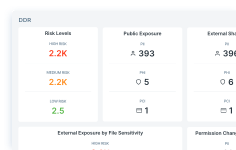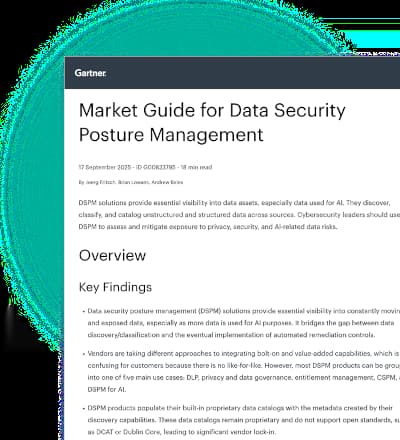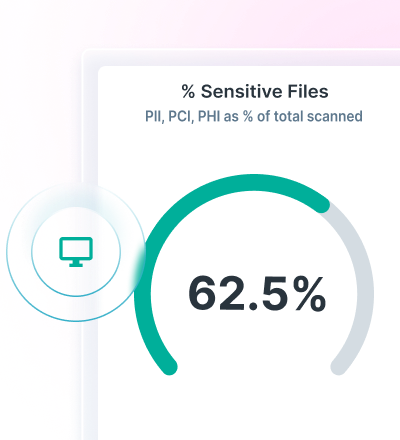Your Fast Track to NIST-Compliant SaaS Security
0 Minuten Lesezeit

Aditya Sahu
In an era where SaaS app-first strategies dominate the IT landscape, securing data in SaaS applications while meeting regulatory requirements like NIST compliance has become mission critical.
Why NIST Compliance Matters
The National Institute of Standards and Technology (NIST) provides cybersecurity frameworks and controls such as the NIST Cybersecurity Framework (CSF) and the NIST SP 800-53 that help organizations strengthen their cybersecurity posture. These are especially critical for:
- Government agencies and contractors
- Healthcare, finance, and other regulated sectors
- Organizations handling Controlled Unclassified Information (CUI)
Compliance with NIST standards requires stringent safeguards for identity management, data protection, incident response, and continuous monitoring.
Key NIST Compliance Challenges for SaaS Adoption
As organizations accelerate their adoption of SaaS applications, aligning with NIST standards becomes increasingly complex. Several common challenges hinder compliance efforts, including:
- Limited Visibility into SaaS Usage (Shadow IT)
Organizations often find it challenging to monitor even the SaaS applications they’ve sanctioned for employee use. However, gaining visibility into unsanctioned or shadow IT apps being actively used is even harder and thus resulting in ungoverned data flows, increased risk exposure, and compliance gaps. - Data Protection Across Hybrid Environments
Sensitive data residing in SaaS applications like Microsoft 365 and Copilot is increasingly exposed to risks such as accidental oversharing, malware infiltration, and inadequate access controls. For instance, a misconfigured SharePoint site may unintentionally expose confidential financial reports to all employees or even external users without proper visibility or audit trails. Similarly, AI-powered tools like Microsoft Copilot can inadvertently generate or share sensitive content based on unsecured or outdated data sources. These scenarios not only increase the risk of data leaks but also violate NIST’s requirements for data confidentiality, integrity, and access governance. - Compliance Automation & Documentation
Manual processes for audits, policy updates, and incident tracking significantly slow down compliance efforts and increase the risk of human error. For example, if a security team relies on spreadsheets and email threads to track policy changes or user access incidents, it becomes difficult to maintain consistent documentation or respond quickly to compliance audits. In the event of a data breach, this lack of automation can delay incident response and make it challenging to produce the detailed records required by NIST controls such as IR-6 (Incident Reporting) or AU-2 (Audit Events). Automation is critical to ensuring timely, accurate, and scalable compliance reporting - Evolving Standards & Scalability
Emerging NIST updates (e.g., CSF 2.0) demand tools that can adapt to new threats like Generative AI and Copilot capabilities many existing SaaS security solutions lack.
Forcepoint CASB Enables NIST-Compliant Security
Forcepoint CASB bridges the gap between SaaS app and cloud adoption and compliance. It provides deep visibility and control across SaaS and IaaS environments, empowering organizations to meet NIST requirements while optimizing cloud security.
The table below outlines how Forcepoint CASB aligns with key NIST Cybersecurity Framework functions and corresponding control requirements.
NIST CSF | Forcepoint CASB | Description | Mapped NIST Controls |
| Identify | Application Discovery & Risk Assessment | Performs application discovery by monitoring shadow IT and assessing risk posture of each application. | CM-8 (System Component Inventory), RA-5 (Vulnerability Scanning) |
| Protect | Data Loss Prevention (DLP) & Access Controls | Integrates with Forcepoint DLP to enforce data protection policies and role-based access controls. | AC-2 (Account Management), AC-17 (Remote Access), MP-5 (Media Transport Protection), SC-12 (Cryptographic Protection) |
| Detect | Threat Detection & Monitoring | Uses behavioral analytics and machine learning to detect anomalous behavior, insider threats, and compromised accounts. | AU-6 (Audit Review), SI-4 (System Monitoring) |
| Respond | Automated Incident Response | Supports automated incident notifications, policy remediation, and user session control for rapid response. | IR-4 (Incident Handling), IR-5 (Incident Monitoring) |
| Recover | Logging & Reporting for Forensics | Provides audit trails, compliance reports, and historical data to aid investigations and recovery. | AU-2 (Audit Events), IR-6 (Incident Reporting) |
To Conclude
Achieving NIST compliance in a SaaS app-first world can be complex however with the right tools, it’s entirely achievable. Forcepoint CASB empowers organizations with the visibility, control, and automation needed to align with NIST standards while securing sensitive data across cloud environments.
By unifying advanced threat protection, robust data security, and consistent policy enforcement, Forcepoint CASB simplifies compliance without slowing innovation. It’s not just about meeting standards; it’s also about doing so with speed, scale, and confidence.

Aditya Sahu
Mehr Artikel lesen von Aditya SahuAditya Sahu serves as the Senior Technical Marketing Engineer at Forcepoint, focusing on Secure Service Edge (SSE) and other security products. With more than 14 years of expertise in cybersecurity, Aditya is dedicated to assisting organisations in safeguarding their data against constantly evolving cyber threats.
 The Forrester Wave™: Security Service Edge Solutions, Q1 2024Bericht des Analysten anzeigen
The Forrester Wave™: Security Service Edge Solutions, Q1 2024Bericht des Analysten anzeigen
X-Labs
Get insight, analysis & news straight to your inbox

Auf den Punkt
Cybersicherheit
Ein Podcast, der die neuesten Trends und Themen in der Welt der Cybersicherheit behandelt
Jetzt anhören









